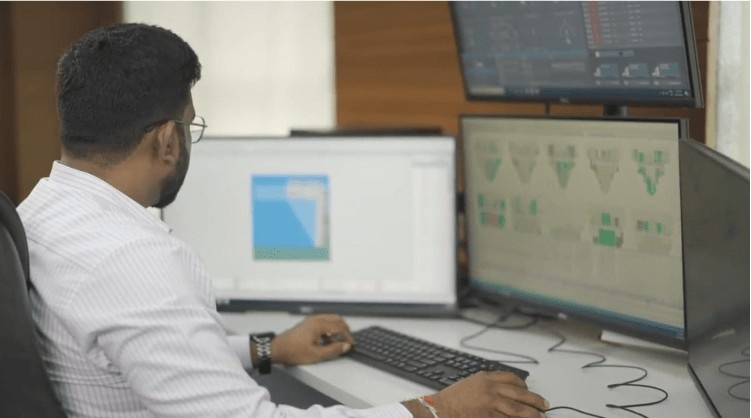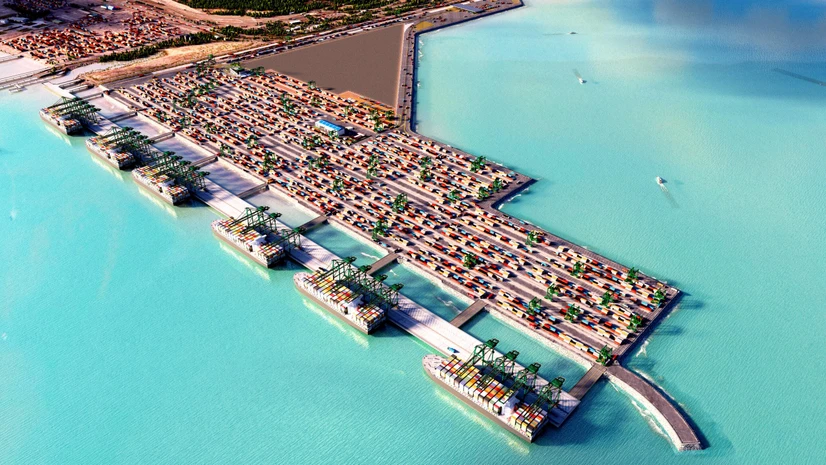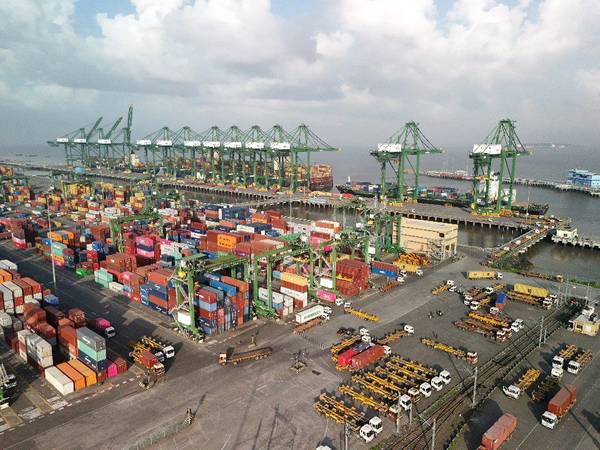In India’s dynamic trade environment, shipping lines are crucial, transporting almost 95% of the nation’s commerce by volume. However, these companies work in a highly regulated environment—where compliance is no longer an after-shipment activity but a part of every port call, cargo movement, and documentation process.
Shipping lines must now comply with strict regulatory requirements on customs declarations, ship inspections, cargo security, environmental protection, and transhipment procedures—often under strict deadlines and scrutiny. Manual systems, previously the industry standard, cannot keep up with this pace and level of complexity.
This blog refers to the emerging technologies in logistics and supply chain management that fill this gap with efficiency, transparency, and real-time control.
How Technology Simplifies Regulatory Compliance for Logistic Companies?
1. Digitization of Documentation: The Building Block of Contemporary Compliance
At the core of compliance with regulation is documentation—copious, time-critical, and highly detailed. A shipping line must submit customs manifests, transhipment reports, cargo declarations, safety records, etc. In the past, these used to be paper records or keyed into stovepipe systems, inviting the danger of delay and penalty.
- Electronic Data Interchange (EDI) Integration: Shipping lines can integrate with customs systems such as ICEGATE, enabling error-free, seamless electronic filing of manifests, waybills, and clearing documents.
- Automation of Manifest Filing (SCMTR Compliance): Manifests for SCMTR cargo can be automatically generated based on shipment data retained in internal ERP systems. This provides timely, compliant filings.
- Standardization and Version Control: Document templates are harmonized with regulatory formats, ensuring consistency. Version control prevents old forms from being submitted during inspections.
2. Real-Time Visibility: Facilitating Proactive Compliance
For shipping companies, having visibility over containers, cargo status, and vessel operations in real-time is critical to ensuring compliance with regulations. Compliance is not at the port of entry—it persists through container movement, inspection processes, and transhipment handovers.
- RFID and GPS-Based Container Tracking: These emerging technologies in logistics and supply chain management provide real-time geolocation information and movement history of containers. This applies both within ICD (Inland Container Depot) networks and on-port.
- Digital Gate Automation and Yard Management: Entry/exit records, weight checks of cargo, and container placement can now be digitally traced. Each movement creates a time-stamped log, which proves helpful during audits or establishing compliance.
- Operational Dashboards: These single-point hubs enable shipping lines to track all vessel-related operations, compliance incidents, and outstanding regulatory activities from one interface.
With RFID-enabled gate systems, automated container handling at PSA Mumbai, and the multi-modal connectivity offered at PSA Ameya, shipping lines have real-time control over the visibility of containers and cargo. Such systems are particularly valuable when coordinating compliance across inland movement over long distances to ICDs through DFC-aligned rail corridors.
3. Environmental Compliance: Keeping Up with Maritime Sustainability Norms
Environmental laws—particularly those by IMO MARPOL regulations—are tightening. From emissions regulation to waste disposal and ballast water discharge, shipping companies must prove compliance in real-time and keep electronic records for periodic audits.
- Emission Monitoring Systems: Sensors onboard track sulfur content, fuel use, and CO₂ emissions, comparing them to MARPOL and national environmental standards.
- Ballast Water Management Logs: Electronic logging of ballast water treatment and discharge guarantees that ships comply with global safety and environmental regulations.
- Digital Compliance Reports: Automatically generated reports are filed with port authorities and the Ministry of Environment, Forest and Climate Change during audit or spot checks.
Though emissions are under the control of vessels, PSA India’s efficient port equipment and operations minimize idling and fuel consumption during the handling of cargo. This indirectly promotes compliance by keeping port call emissions in check. PSA terminals also adopt organized waste management procedures according to environmental regulations, offering a compliant platform for shipping lines being served through them.
4. Cold Chain & Sensitive Cargo Compliance: Simplified Through Warehouse Logistic Technology
Shipping lines also handle cargo categories that need to be in controlled environments, such as pharmaceuticals, chemicals, and perishables. These are accompanied by strict regulatory specifications concerning temperature, humidity, storage, and handling.
- Digital Temperature Logging: Warehouses and reefers carry real-time monitoring equipment that constantly logs temperature, retaining audit-ready data trails.
- Automated Reefer Monitoring: Reefer containers have systems installed to monitor power supply and condition status and send alerts on anomalies.
- Audit Reports and Regulatory Certifications: Warehouse management systems that are compliant with pharma and food safety regulations generate records automatically according to pharma and food safety standards.
PSA Ameya, situated at Mundra, offers state-of-the-art temperature-controlled warehousing (TCW) for cold chain freight. With temperature-controlled chambers (+2°C to +8°C and +15°C to +25°C), more than 140 reefer plug points, digital logging systems, and PIR panel insulation, shipping lines can trust PSA Ameya to meet complex storage compliance without investment in infrastructure by themselves.
This applies to shipping lines serving pharmaceutical exporters, or FMCG conglomerates with stringent SLA standards.
5. Centralized Compliance Platforms: A Strategic Imperative
Handling compliance for multiple ports, shipments, and regulatory bodies is a chore. Logistic technology allows shipping lines to centralize this activity, maintaining uniformity and filling gaps.
- Alerts & Notifications: Automatically mark approaching document renewal, customs law changes, or filing deadlines.
- Audit Trail Generation: Keep track of all the regulatory interactions with time stamps, officer approvals, and document history.
- Multi-Port Oversight: Permit headquarters to monitor compliance status at all open ports of call within India to prevent fragmentation.
PSA India facilities are integrated with India’s PCS ecosystem and customs networks digitally to ensure shipping lines always have a regulated environment in which to operate. Their internal systems are aligned with external compliance dashboards, allowing clients complete control while minimizing internal workload.
Conclusion
For Indian shipping lines, regulatory compliance is no longer a one-off duty but a regular affair needing vision, precision, and timely coordination. With regulations concerning customs, the environment, safety, and cargo on each ship all focusing in one place, non-compliance is a costly proposition—both in terms of money and reputation.
Therefore, emerging technologies in logistics and supply chain management are playing a crucial role in streamlining compliance, ensuring that all regulatory requirements are met efficiently and accurately.
With its advanced terminals and intelligent warehousing capabilities, PSA India offers a regulation-compliant infrastructure that facilitates this journey. PSA India not only assists in smoother operations for shipping lines but also proactively helps improve their competitiveness in global trade.
Frequently Asked Questions
1. How does technology affect logistics and transportation management?
Logistics technology plays a crucial role in enhancing efficiency, visibility, and compliance. By integrating real-time tracking systems like RFID and GPS, shipping lines can streamline cargo movement, reduce delays, and ensure accurate documentation. Technologies such as automated manifest filing and digital gate automation at PSA terminals help shipping lines manage operations efficiently while meeting regulatory compliance standards.
2. Why is technology integration important in logistics?
Technology integration is essential in modern logistics for improving regulatory compliance and optimizing operations. Through automated processes like electronic data interchange (EDI) and real-time cargo visibility, logistics companies can reduce errors, speed up customs clearance, and ensure timely deliveries. This integration enhances efficiency and keeps the logistics supply chain adaptable and responsive to market demands.
3. What technology is used in the logistics industry?
The logistics industry utilizes several key technologies, including RFID-based tracking, automated manifest filing, and digital temperature logging for cold chain cargo. These technologies improve efficiency, accuracy, and regulatory compliance. Port community systems (PCS) and Terminal Operating Systems (TOS) are also employed to enhance real-time visibility, reduce paperwork, and streamline processes at ports like PSA Mumbai and PSA Ameya.










